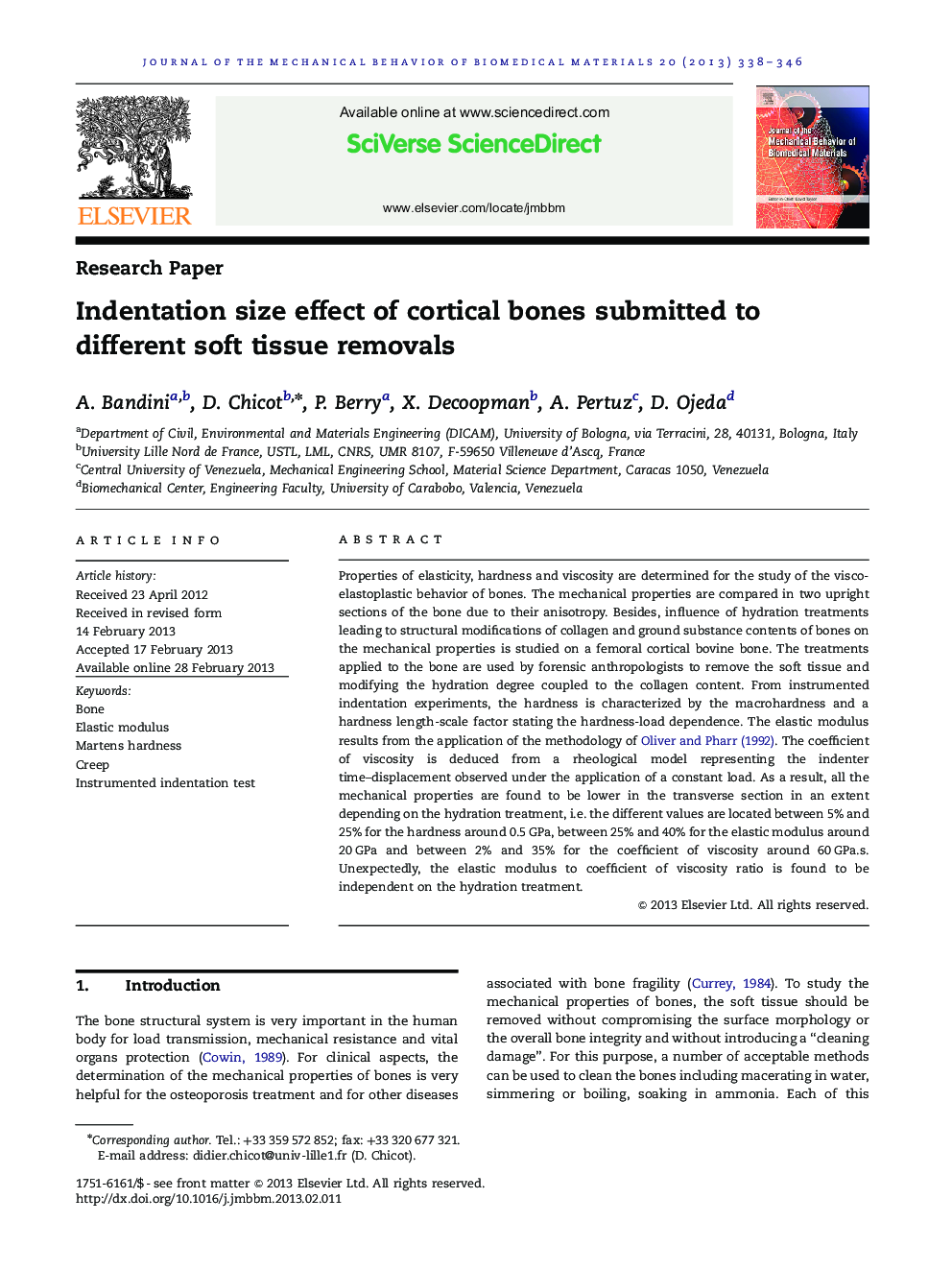| Article ID | Journal | Published Year | Pages | File Type |
|---|---|---|---|---|
| 810926 | Journal of the Mechanical Behavior of Biomedical Materials | 2013 | 9 Pages |
Properties of elasticity, hardness and viscosity are determined for the study of the visco-elastoplastic behavior of bones. The mechanical properties are compared in two upright sections of the bone due to their anisotropy. Besides, influence of hydration treatments leading to structural modifications of collagen and ground substance contents of bones on the mechanical properties is studied on a femoral cortical bovine bone. The treatments applied to the bone are used by forensic anthropologists to remove the soft tissue and modifying the hydration degree coupled to the collagen content. From instrumented indentation experiments, the hardness is characterized by the macrohardness and a hardness length-scale factor stating the hardness-load dependence. The elastic modulus results from the application of the methodology of Oliver and Pharr (1992). The coefficient of viscosity is deduced from a rheological model representing the indenter time–displacement observed under the application of a constant load. As a result, all the mechanical properties are found to be lower in the transverse section in an extent depending on the hydration treatment, i.e. the different values are located between 5% and 25% for the hardness around 0.5 GPa, between 25% and 40% for the elastic modulus around 20 GPa and between 2% and 35% for the coefficient of viscosity around 60 GPa.s. Unexpectedly, the elastic modulus to coefficient of viscosity ratio is found to be independent on the hydration treatment.
► Mechanical properties of hydrated bones are studied by instrumented indentation. ► Hardness is characterized by the macrohardness and an indentation size effect parameter. ► The viscosity is studied by means of rheological models. ► The mechanical properties are lower in the transverse section depending on the hydration treatment. ► The elastic modulus to coefficient of viscosity ratio is independent on the hydration treatment.
